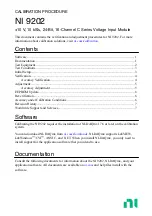
Rockwell Automation Publication 1756-UM001O-EN-P - October 2014
157
Develop Applications
Chapter 10
If an array tag is using indirect addressing to access limits in logic, the following
conditions apply:
•
If the array tag has limits that are configured, the extended properties are
applied to any array element that does not explicitly have that particular
extended property configured. For example, if the array tag MyArray has
Max configured to 100, any element of the array that does not have Max
configured inherits the value of 100 when being used in logic. However, it
is not visible to you that the value inherited from MyArray is configured in
the tag properties.
•
At least one array element must have a limit that is configured for
indirectly referenced array logic to verify. For example, if
MyArray[x].@Max is being used in logic, at least one array element of
MyArray[] must have Max extended property configured if MyArray has
not configured Max.
•
Under the following circumstances a data type default value is used:
–
Array is accessed programmatically with indirect reference.
–
Array tag does not have the extended property configured.
–
A member of an array does not have the extended property configured.
For example, for an array of SINT type, when max limit is called in logic
for a member, the value 127 is used.
If an array element is directly accessed, the element has to have the extended
property defined. If not, verification fails.
Summary of Contents for 1756-L63XT
Page 4: ...4 Rockwell Automation Publication 1756 UM001O EN P October 2014 Summary of Changes Notes...
Page 18: ...18 Rockwell Automation Publication 1756 UM001O EN P October 2014 Preface Notes...
Page 136: ...136 Rockwell Automation Publication 1756 UM001O EN P October 2014 Chapter 8 I O Modules...
Page 210: ...210 Rockwell Automation Publication 1756 UM001O EN P October 2014 Index Notes...
Page 211: ......
















































